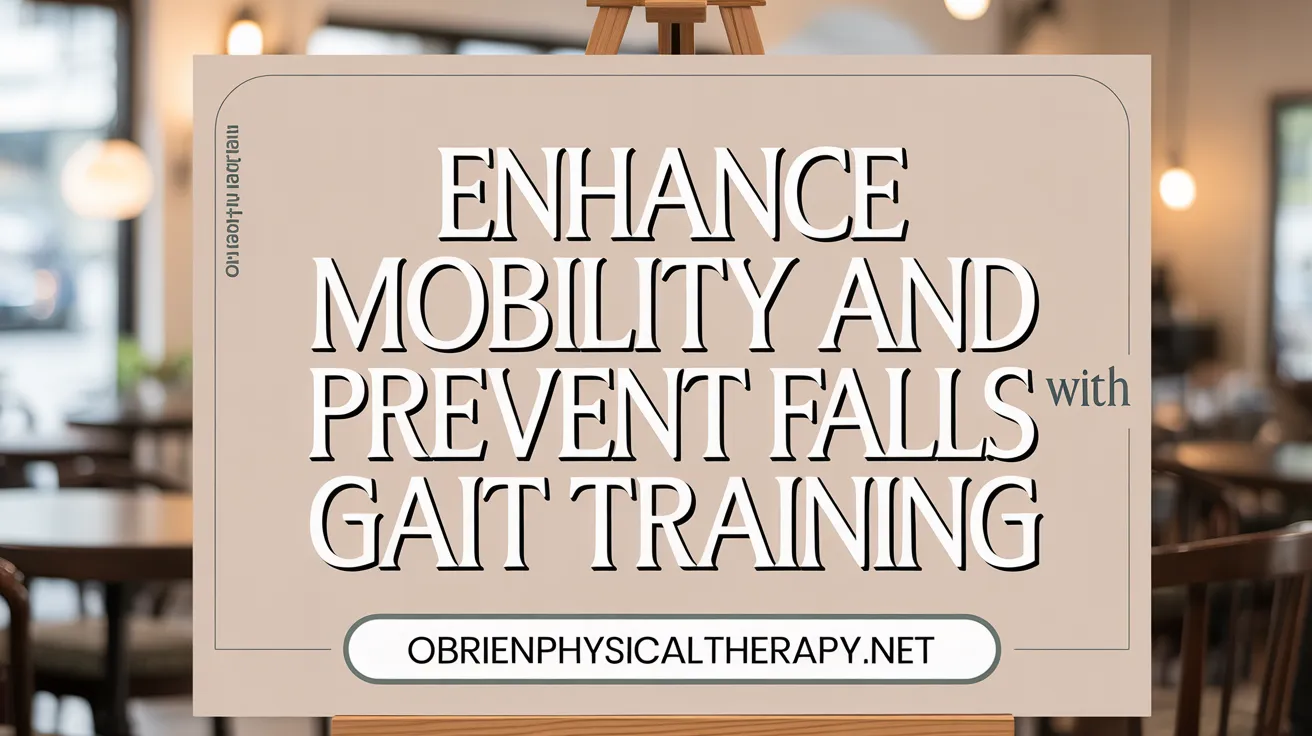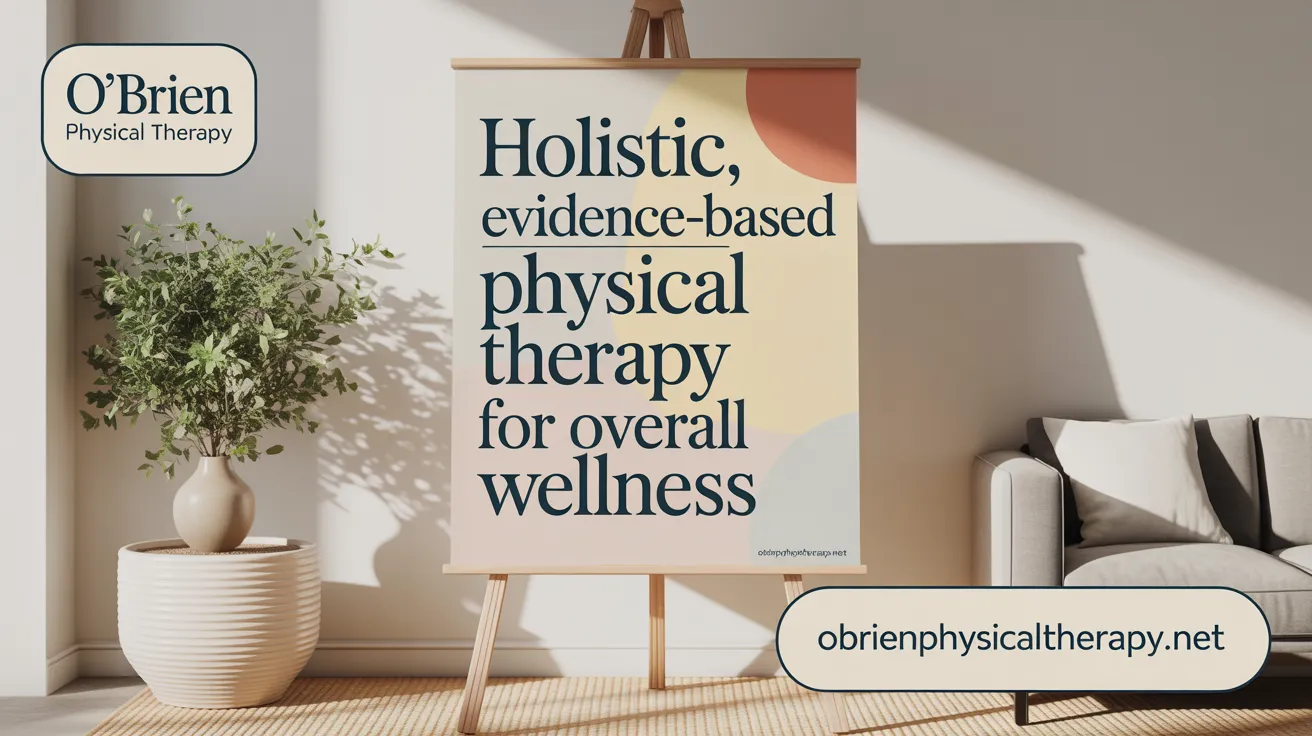Introduction to Gait Training and Its Importance
Understanding Gait Training
Gait training is a specialized form of physical therapy designed to improve an individual's ability to walk and maintain balance effectively. This therapy focuses on enhancing muscle strength, joint flexibility, posture, and coordination, enabling patients to walk more safely and confidently.
Purpose and Objectives
The primary goals of gait training include strengthening muscles and joints, improving balance and posture, developing muscle memory, and reducing the risk of falls. By addressing these elements, gait training helps increase overall physical activity, which can also contribute to reducing the risk of illnesses such as heart disease and osteoporosis.
Conditions That Benefit
Gait training is particularly beneficial for individuals recovering from injuries or surgeries, and for those living with neurological conditions like stroke, spinal cord injuries, Parkinson's disease, and multiple sclerosis. It also supports older adults managing age-related mobility challenges and helps patients with joint problems or balance disorders regain independence and confidence in their daily movements.
Comprehensive Approach to Gait Assessment and Personalized Rehabilitation

Assessment and Analysis of Gait Patterns
Gait training begins with a thorough evaluation to identify individual walking impairments. Physical therapists assess balance, coordination, muscle strength, and range of motion through clinical observations, gait speed measurements, and specialized tests. Detailed gait analysis includes examination of stride length, step width, foot placement, and symmetry to pinpoint biomechanical or neurological issues impacting mobility.
Customized Treatment Plans
Based on the comprehensive assessment, therapists develop personalized rehabilitation programs tailored to each patient's unique needs and goals. These plans emphasize improving muscle strength, balance, coordination, and endurance while targeting specific gait abnormalities. Rehabilitation includes progressive exercises such as leg lifts, squats, obstacle navigation, and task-specific walking activities to restore efficient and safe movement.
Use of Assistive Devices and Manual Therapy
Therapists may recommend and train patients in the appropriate use of assistive devices like canes, walkers, or orthotics to enhance stability and confidence while walking. Soft tissue mobilization and other manual therapy techniques facilitate joint mobility and muscle flexibility, promoting natural gait patterns. Incorporating supports such as treadmill harness systems further aids safe, gradual mobility retraining.
Patient Education on Gait Principles
Education is a critical component, empowering patients with knowledge about healthy gait mechanics, self-management strategies, and fall prevention techniques. Understanding how different phases of gait and body systems interact helps patients maintain improvements and prevent future mobility issues. Learn more about patient education on gait.
What types of personalized rehabilitation services does this clinic offer?
The clinic provides a wide range of personalized rehabilitation services that address the distinct needs of each patient. These include targeted soft tissue mobilization, individualized exercise regimens, and advanced modalities like electrotherapy. Specialized programs cater to athletes for sports-related rehabilitation and women's health issues such as postpartum recovery and pelvic disorders. Treatment plans are continuously tailored through ongoing assessments, ensuring that patients receive holistic, evidence-based care to support a safe and effective return to active, pain-free living.
Techniques and Exercises Used in Gait Training

Treadmill and Overground Training
Treadmill training is a core technique in gait rehabilitation, often combined with overground walking exercises. Using treadmills, sometimes with partial body weight support via harnesses, helps patients practice walking in a controlled environment. Overground training complements this by enabling patients to apply skills in real-world settings, improving confidence and safety. For more on the use of treadmills in therapy, see this resource.
Balance, Coordination, and Strength Exercises
Improving muscle strength and coordination is vital for a stable gait. Exercises like leg lifts, squats, step-ups, and single-leg holds build essential lower-body strength. Balance exercises, including tandem walking and sidestepping, train the body's ability to maintain stability during movement, reducing fall risks significantly. Learn more about balance and gait training and strengthening muscles and joints.
Range of Motion and Obstacle Training
Range of motion exercises such as ankle pumps and calf stretches address joint flexibility. Obstacle training involves stepping over objects or navigating uneven surfaces to mimic daily walking challenges and enhance leg coordination and proprioception. This practice sharpens the body's ability to react to environmental demands. Explore range of motion exercises and stepping over objects exercises.
Functional Activities and Real-World Gait Challenges
Functional gait training incorporates activities like stair climbing and figure-of-eight walking, which simulate daily mobility tasks. Practicing these with assistive devices or without helps patients regain independence. Task-specific training ensures gains are transferable to everyday life. Find out more about functional gait training and functional training.
Role of Technology in Gait Assessment and Rehabilitation
Advanced technologies, including visual gait analysis tools and software for measuring stride length and stance time, aid physical therapists in diagnosing gait abnormalities. These tools provide objective data to customize rehabilitation plans and track progress effectively, enhancing treatment outcomes. Learn about gait assessment techniques and technological gait analysis.
Through a personalized combination of these techniques and exercises, gait training programs help patients regain safe and effective mobility tailored to their individual needs and goals.
Benefits of Gait Training Across Populations and Conditions

Improvement in Mobility and Independence
Gait training plays a vital role in enhancing walking ability and overall mobility for individuals facing various challenges. Through tailored exercises that focus on balance, strength, coordination, and endurance, patients can regain functional walking patterns, which facilitates greater independence in daily activities. This improvement is especially significant for those recovering from injury or surgery, as well as athletes and individuals with chronic conditions.
Reduction in Fall Risk and Enhancement of Safety
One of the most important benefits of gait training is the substantial reduction in fall risk, which is a critical safety concern, particularly among older adults. Studies indicate that proper balance and gait training exercises can decrease falls by nearly half. By strengthening muscles, improving posture, and enhancing coordination, gait training stabilizes walking and reduces the likelihood of falls and related injuries.
Rehabilitation Following Neurological Conditions and Surgeries
Patients with neurological disorders such as stroke, spinal cord injury, Parkinson’s disease, and multiple sclerosis often experience impaired gait and balance. Gait training supports these individuals by retraining muscle memory, improving neuromuscular control, and reestablishing natural walking mechanics. Post-surgical rehabilitation also benefits through targeted gait exercises that rebuild muscle strength and joint flexibility, accelerating recovery and restoring function.
Support for Aging Populations and Prevention of Secondary Complications
Aging naturally affects muscle strength, joint flexibility, and sensory processing, making seniors more vulnerable to gait abnormalities and falls. Gait training specifically addresses these age-related changes by focusing on balance enhancement and muscle strengthening. Moreover, increased physical activity through gait training helps prevent secondary health issues such as osteoporosis and heart disease, contributing to comprehensive wellness and improved quality of life for older adults.
Together, these benefits underline the importance of gait training as a personalized, evidence-based therapy accessible to diverse patient populations, empowering them toward safer, more active, and pain-free lives.
Holistic and Evidence-Based Care in Physical Therapy for Gait and Overall Wellness

How does the clinic approach holistic health?
At Kintsugi Physical Therapy & Wellness, holistic health care is central to our practice. We combine evidence-based physical therapy techniques with emotional, lifestyle, and spiritual well-being strategies to treat the whole person. By addressing conditions like pelvic floor dysfunction through methods such as soft tissue mobilization, pelvic floor muscle retraining, neuro-retraining, and electrical stimulation, we ensure recovery is comprehensive. Our personalized approach reflects recognition that physical health is deeply connected to emotional and mental well-being, offering patients integrated care tailored to their unique needs. Learn more about our Womens Health Rehab.
What specialties does the clinic have in women's health and sports rehabilitation?
The clinic specializes in women's health rehabilitation, providing dedicated programs for pelvic floor recovery, postpartum support, and prenatal care. We manage conditions such as pelvic pain, incontinence, and post-surgical rehabilitation through individualized treatment plans. For sports rehabilitation, our experts focus on injury prevention, targeted recovery, and performance enhancement, catering to athletes at all levels. These specialties underscore our commitment to personalized, holistic care that improves functional performance and promotes overall wellness. For further details on effective sports rehabilitation and pelvic health, explore our specialized care options.
What evidence-based treatments are provided for pain relief and recovery?
We deliver a range of clinically supported treatments aimed at effective pain relief and recovery. Manual therapies, including joint and soft tissue mobilization, help alleviate pain and restore function. Therapeutic exercises are carefully tailored to build strength, flexibility, and stability, fostering sustainable recovery. Additional modalities such as ultrasound and electrical stimulation aid in reducing inflammation and accelerating tissue healing. Our rehabilitation protocols align with current research, ensuring patients receive safe, effective, and individualized care that supports their long-term health and mobility. Discover how our comprehensive physical therapy techniques support recovery and pain management.
Conclusion: The Transformative Impact of Gait Training on Quality of Life
Comprehensive Benefits of Gait Training
Gait training is a vital element of physical therapy that supports individuals in regaining walking ability, enhancing balance, strengthening muscles, and reducing the risk of falls. It improves posture, coordination, endurance, and overall mobility, helping patients regain independence and confidence in everyday activities.
The Importance of Specialized Physical Therapy
Seeking specialized physical therapy ensures that gait training is tailored specifically to your unique needs. Expert physical therapists use thorough assessments and personalized interventions, addressing underlying causes of gait dysfunction and optimizing recovery.
Personalized and Evidence-Based Care
Successful outcomes depend on individualized, evidence-based treatment plans incorporating advanced techniques such as treadmill training, overground walking, and assistive device education. This approach maximizes functional improvements and supports a safer, more active lifestyle, particularly for those recovering from injury, surgery, or managing neurological conditions.
Embrace gait training with professional guidance to restore your mobility and improve your quality of life.
